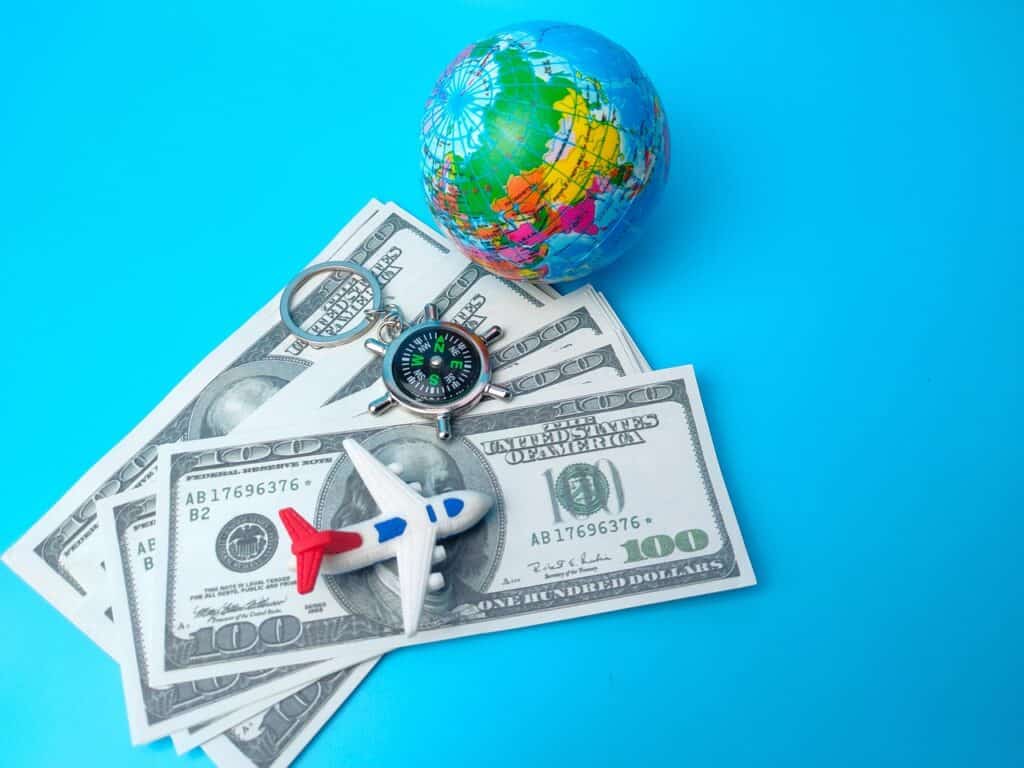We may earn money or products from the companies mentioned in this post. This means if you click on the link and purchase the item, I will receive a small commission at no extra cost to you ... you're just helping re-supply our family's travel fund.

America’s tourism industry, long viewed as a powerhouse of global travel, is suddenly showing signs of serious strain. What might seem like a short-term dip is, in fact, rooted in deep structural shifts: a surging U.S. dollar, rising costs, tighter visa rules, and growing global competition are all playing a role. Las Vegas often the canary in the coal mine for American travel is reeling. But its troubles reflect broader challenges that could reshape how and whether visitors choose the U.S.
1. The Strong Dollar Makes the U.S. Costly

One of the most immediate headwinds for foreign visitors is the strength of the U.S. dollar. A strong dollar inflates the real cost of American vacations for travelers converting from weaker currencies, making hotel stays, dining, and attractions patently more expensive. According to recent analysis, this currency pressure is a central factor discouraging international tourism. As other destinations become more attractive in relative value, the U.S. risks losing its edge.
2. A Sharp Drop in Foreign Visitor Spending

The World Travel & Tourism Council (WTTC) projects that foreign travel spending in the U.S. will decline by 7%, or about US$12.5 billion, in 2025. That would bring international visitor spending below US$169 billion, down from US$181 billion in 2024 and 22% below its 2019 peak. This isn’t just a small pullback; it’s a major revenue contraction that signals deeper demand issues.
3. Visa Costs and Entry Friction Are Turning Visitors Away

New visa policies are adding friction for international travelers. The U.S. has introduced a US$250 “visa integrity fee”, which disproportionately affects major source markets like India, China, and Mexico. In addition to this, stricter screening, longer processing times, and heightened border scrutiny create uncertainty and anxiety. This logistical burden discourages potential visitors before they even book flights.
4. Las Vegas Is Crying Out : Visitor Numbers Are Down

Las Vegas, once the most emblematic tourism destination in America, is seeing a serious slump. In June 2025, the city recorded 3.09 million visitors, down 11.3% from June 2024. Year-to-date through June, visitation is down 7.3%. Meanwhile, airport traffic to Harry Reid International fell by 4.1%, and average daily room rates slipped to about US$163.64. This signals that even Sin City, long resilient, is being tested.
5. Inflation and Hidden Fees Erode the Value Proposition

Travel not only feels more expensive, it is more expensive. Inflation has driven up the cost of food, transport, and lodging, while resort fees, parking charges, and ancillary costs have piled on unpredictably. Some visitors report surging “junk fees” that undermine the value they once saw in U.S. travel. As the gap between cost and experience widens, many are reconsidering American destinations that once felt like a bargain.
6. Americans Themselves Are Looking Abroad

It’s not just foreign tourists who are rethinking their travel plans: many U.S. residents are finding that overseas travel offers improved value. With rising airfare, hotel inflation, and unexpected fees at home, mid-budget Americans are opting for cheaper, culturally rich international destinations especially in Mexico, Europe, and Southeast Asia. That shift is draining the domestic tourism pool, too, weakening a core pillar of America’s travel economy.
7. Image and Political Climate Are Taking a Toll

Political friction, strict immigration policies, and a tougher tone at U.S. borders are denting America’s appeal. Reports point to growing unease among travelers about visa renewals, customs enforcement, and the broader perception that the U.S. is less welcoming. For many would-be visitors, these issues are not abstract, they translate into real risk, frustration, and cost.
8. Competitors Are Outpacing the U.S. on Value and Experience

Other countries are aggressively capturing the travel dollar by offering seamless digital experiences, lower costs, and rich cultural value. Places like Southeast Asia, Europe, and the Middle East are increasingly attractive for both budget-conscious and high-spend travelers. The U.S., by contrast, may be relying too heavily on legacy allure rather than adapting to these changing global preferences. Without a competitive reset, it risks losing ground.